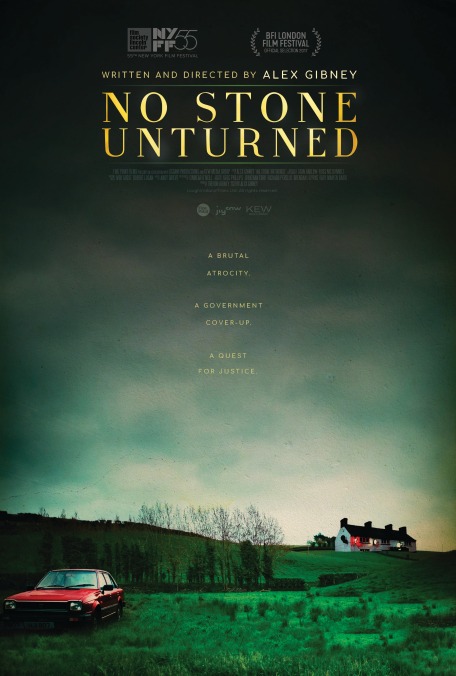A real-life Irish massacre offers brutal facts, but little mystery, in Alex Gibney's No Stone Unturned

In June of 1994, masked gunmen entered a pub in the tiny Northern Ireland town of Loughinisland, spraying the patrons with assault-rifle fire, killing six. It was a remarkable act partly because of how unsurprising it was: The charmingly named “Troubles” of Northern Ireland—three decades of bloody, brutal civil war, essentially—had made civilian casualties and cold-blooded murder a regular occurrence. Nearly every week, paramilitary forces, most notably the Irish Republican Army and the Ulster Volunteer Force, would carry out attacks in support of their respective cause. Whatever “gains” were made were quickly erased, and the idyllic countryside was deadly and dangerous until 1998, when peace agreements were reached. Alex Gibney’s No Stone Unturned offers a quick primer on the conflict itself, but mostly concentrates on this particular night, and what the subsequent investigation revealed about corruption during this deep, ugly war.
The so-called “Loughinisland Massacre” was also notable because the victims happened to be watching Ireland compete in the World Cup—it’s sometimes called the “World Cup Massacre”—when they were shot. Gibney (Going Clear, Enron: The Smartest Guys In The Room, dozens more docs) actually covered the killings from a more sports-centric angle for ESPN’s 30 For 30 series, in an episode called “Ceasefire Massacre.” But here, he’s the proxy for the victims’ families, who not only weren’t able to find swift justice, but found misdirection, confusion, and what they assumed—rightly, as it turns out—was a cover-up. Suspects were questioned, strong evidence was gathered, and no one was held accountable for the crimes at the time.
Which isn’t to say no one took the blame: The UVF claimed responsibility for the killings, calling them a response to the recent murders of three of their own. But the actual killers themselves remained elusive, and all of the hallmarks of a cover-up—missing evidence, stonewalling investigators—were present. Gibney does an intriguing job of trying to figure out why this case wasn’t effectively investigated. Would it have reopened wounds that seemed ready to start closing and interfere with the peace process? Would exposing the real killers in turn expose the government officials who had colluded with them? It all sounds like a Scorsese movie—there’s even a killer nicknamed “The Steak Knife”—but without much resolution. There are investigative revelations, but they feel a bit nominal for reasons too spoiler-y to explicate.
Try as it might to build a sense of mystery out of the story, No Stone Unturned actually doesn’t have that much intrigue to work with. It was a commonly accepted fact that members of the police and military were sympathetic to the loyalist cause, and that there were informants nestled deep in both sides who were protected at the cost of justice. There’s intimation of intimidation and hints at more intriguing angles, but at its heart, No Stone Unturned is a simple story shrouded in sad facts of the bigger one that surrounds it.